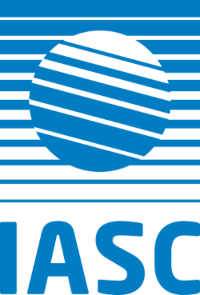Project Report
 The Arctic Vegetation Archive (AVA), Arctic Vegetation Classification (AVC), and Circumpolar Arctic Vegetation Map (CAVM) are long-term activities that aim to provide a framework to support studies on climate change and biodiversity in the Arctic using vegetation data. The AVA/AVC workshop at Arctic Science Summit Week (ASSW) 2023 in Vienna was attended by 23 people from nine countries, with some joining via Zoom.
The Arctic Vegetation Archive (AVA), Arctic Vegetation Classification (AVC), and Circumpolar Arctic Vegetation Map (CAVM) are long-term activities that aim to provide a framework to support studies on climate change and biodiversity in the Arctic using vegetation data. The AVA/AVC workshop at Arctic Science Summit Week (ASSW) 2023 in Vienna was attended by 23 people from nine countries, with some joining via Zoom.Posters were presented by several early career scientists during a pre-workshop lunch. The workshop began with regional updates from vegetation scientists working across the Arctic, followed by group discussions on data management issues, crosswalks among regional species lists, and future activities, which were cut short due to time constraints. The participants agreed to continue discussions during monthly online meetings over the next year and plan for the next workshop at ASSW 2025 focused on ICARP IV.
The AVA/AVC initiative has made progress in several regions since the ASSW 2019 workshop in Arkhangelsk:
 In Alaska, the Alaska Arctic Geobotanical Atlas was updated to include an open-source web-based CKAN Data Catalog, a new raster version of the Circumpolar Arctic Vegetation Map was published, and a new plot dataset is available from a study on cumulative impacts of development in ice-wedge polygon terrain in the Prudhoe Bay Oilfield (Walker et al. 2022).
In Alaska, the Alaska Arctic Geobotanical Atlas was updated to include an open-source web-based CKAN Data Catalog, a new raster version of the Circumpolar Arctic Vegetation Map was published, and a new plot dataset is available from a study on cumulative impacts of development in ice-wedge polygon terrain in the Prudhoe Bay Oilfield (Walker et al. 2022).- In Russia, a new online plot archive was created (AVA-RU), a checklist of syntaxa was published (Matveyeva and Lavrinenko 2021), a new Braun-Blanquet zonal tundra vegetation class was described (Matveyeva et al. 2023), and several recent papers have described new plant associations with circumpolar counterparts.
- In Canada, the Canadian Arctic Vegetation Archive (AVA-CA) now houses 8,735 plots and classification has been completed for Ecosystems of the Yukon Arctic Region (MacKenzie et al. 2022).
- In Greenland, data from several sources are being assembled in one Turboveg database, though additional work is needed to prepare the data for analysis with other circumpolar data.
The initiative has also made progress in archiving pan-Arctic vegetation data in TURBOVEG3, a data management tool used by the European Vegetation Archive. TURBOVEG3 can harmonize species names from multiple datasets and assign plot observations to vegetation types, which can be used to create distribution maps of habitat types.
Funding from the International Arctic Science Committee (IASC) Terrestrial Working Group provided support for the workshop and the participation of early career researchers. The workshop agenda are abstracts are available at https://geobotany.org/ava/vienna2023
Photo Credits:
Top Left: Jozef Šibík - The workshop included 7 oral and 4 poster presentations
Bottom-Right: Vitalii Zemlianskii - The meeting was attended by 23 people from nine countries, including some joining via Zoom
Date and Location:
ASSW 2023 February 2023 I Vienna, Austria
IASC Working Group / Committees funding the Project:
- Terrestrial WG
Project Lead
Year funded by IASC
2022
Project Status
Completed
